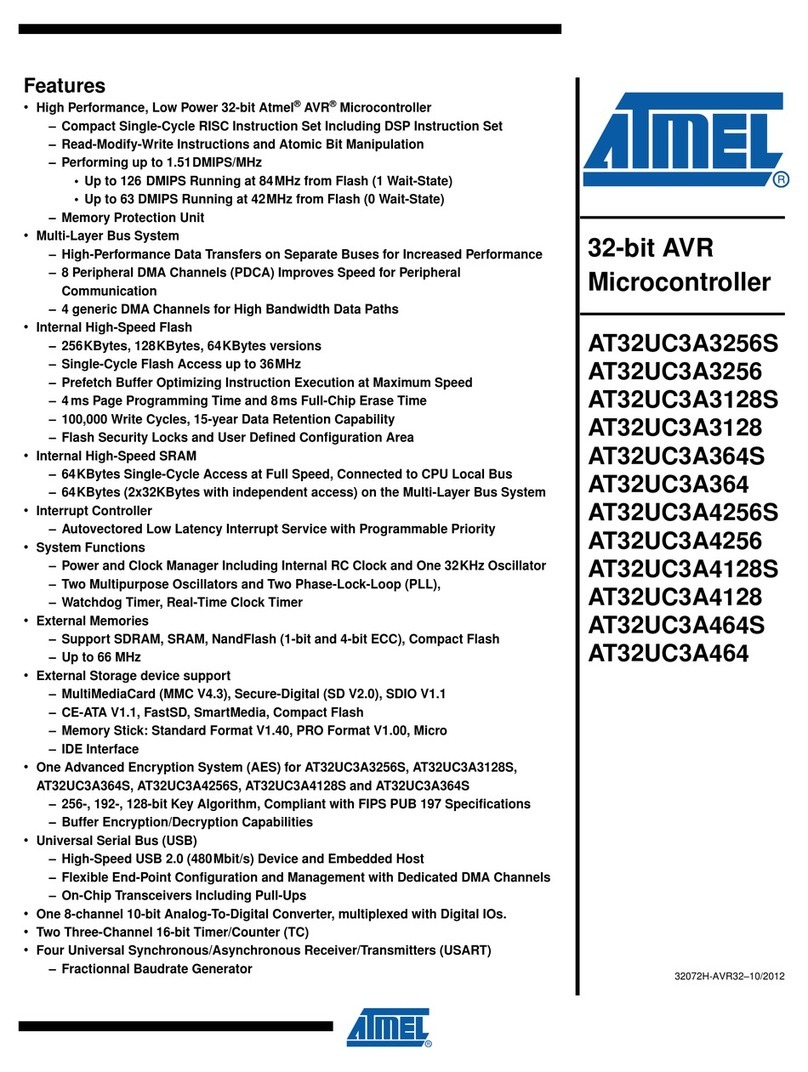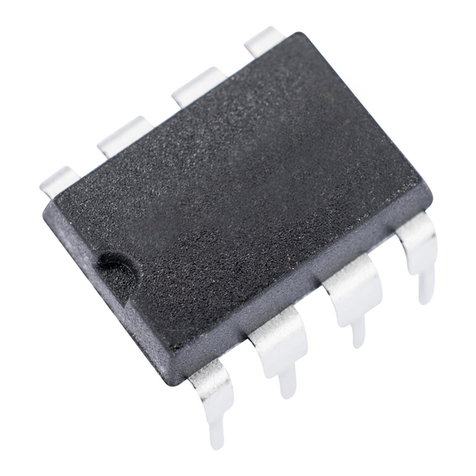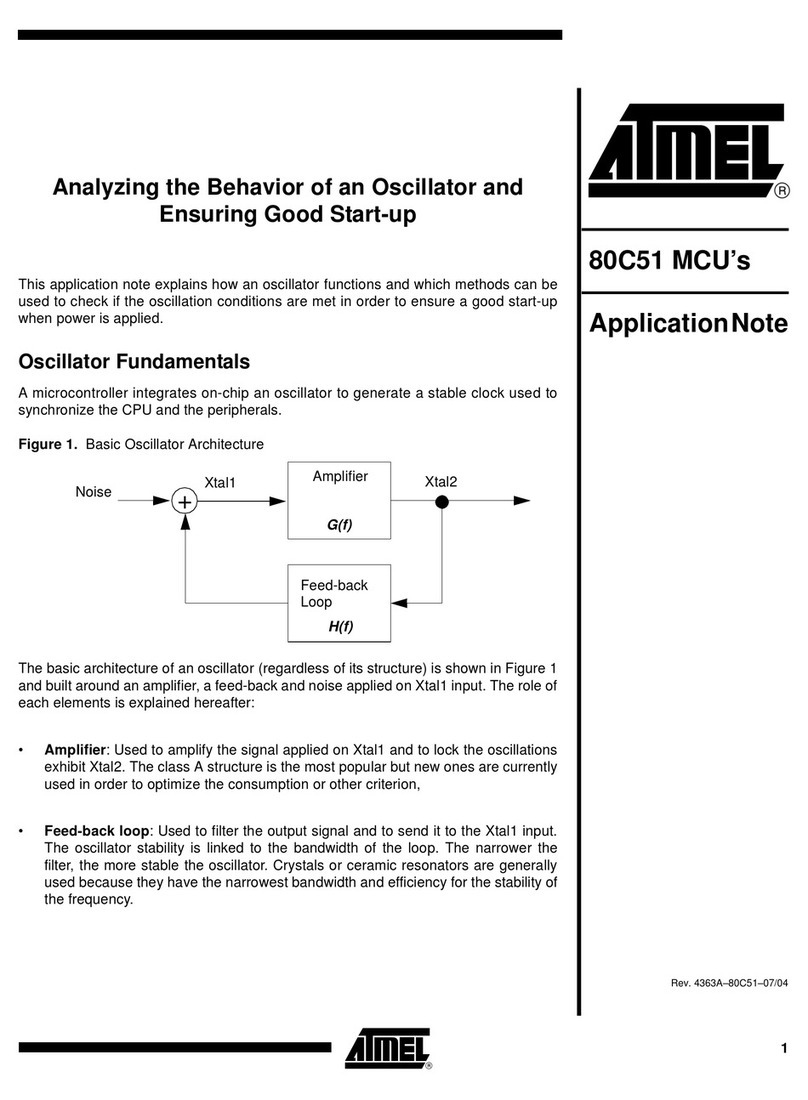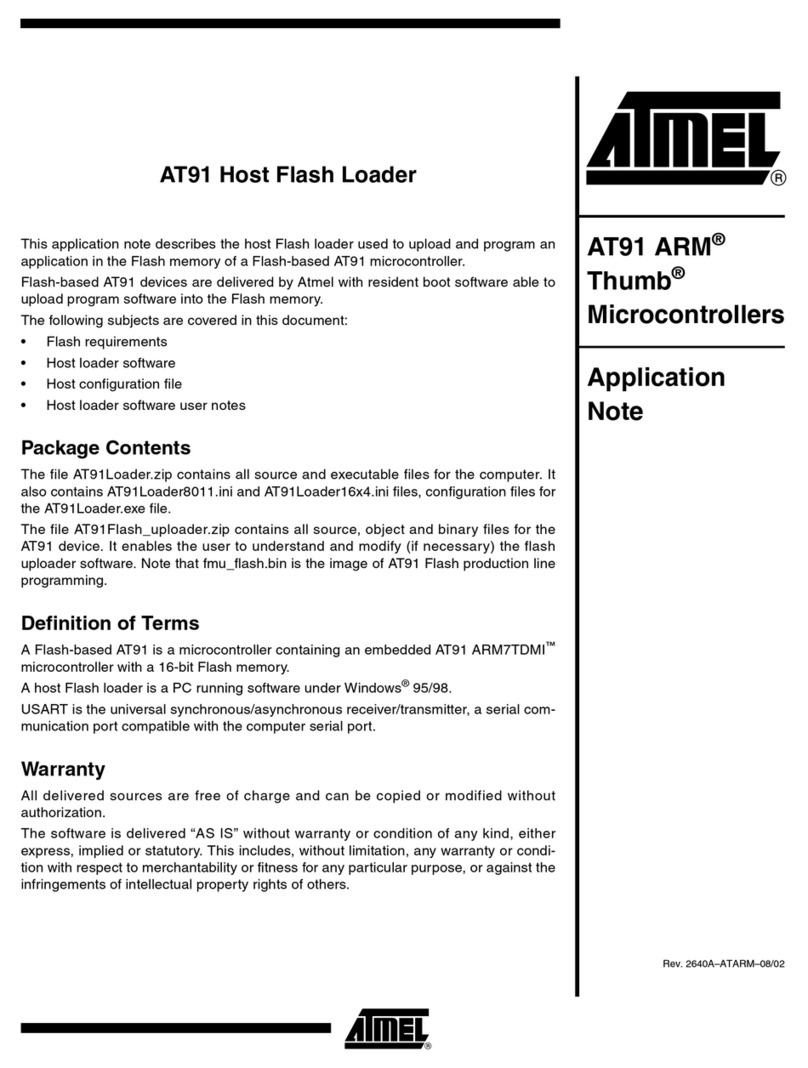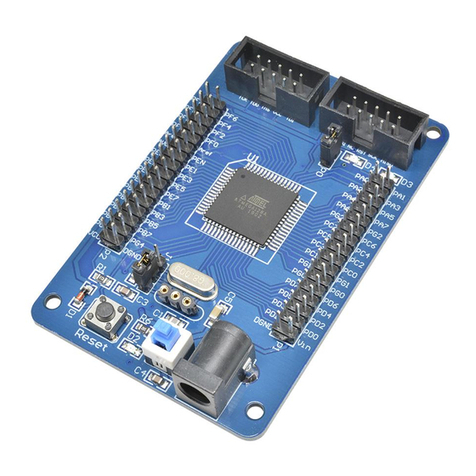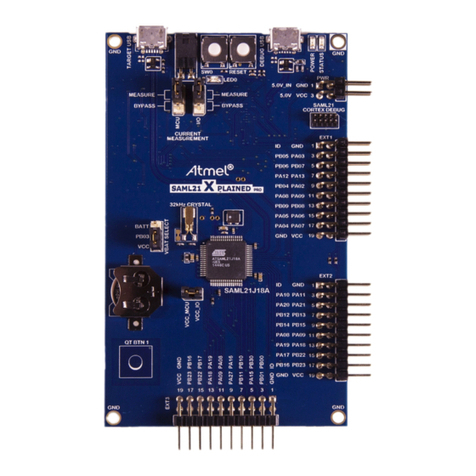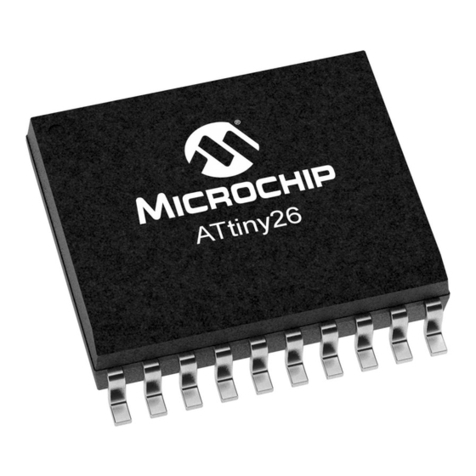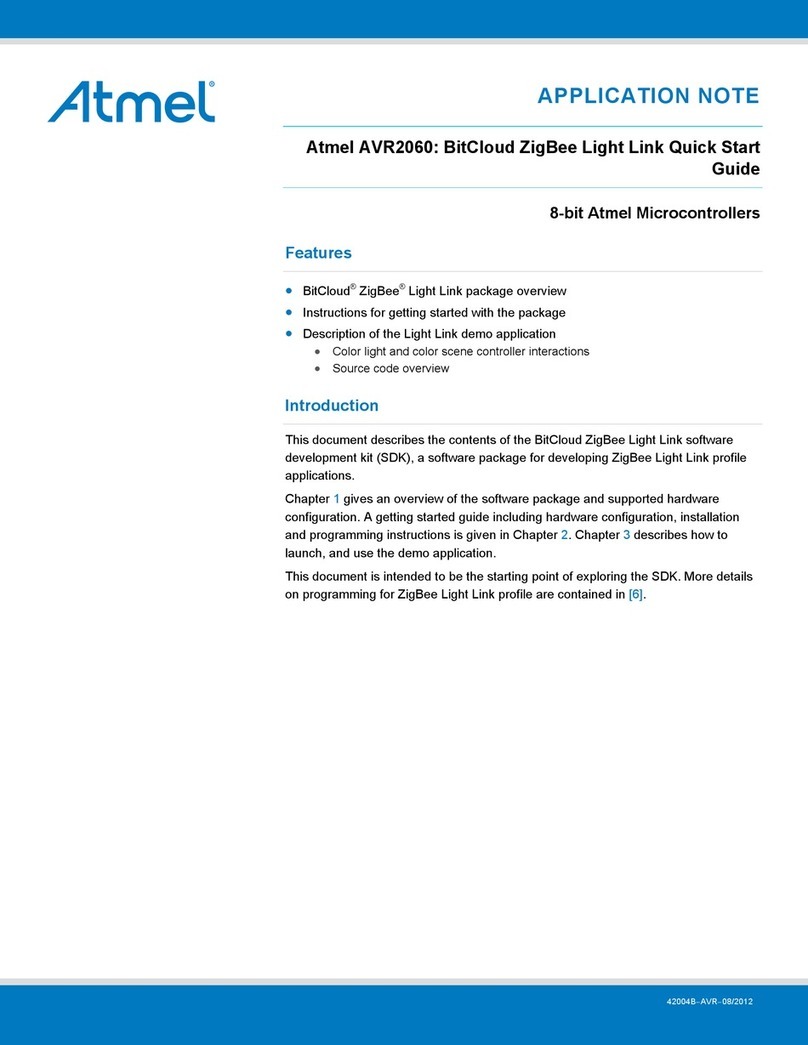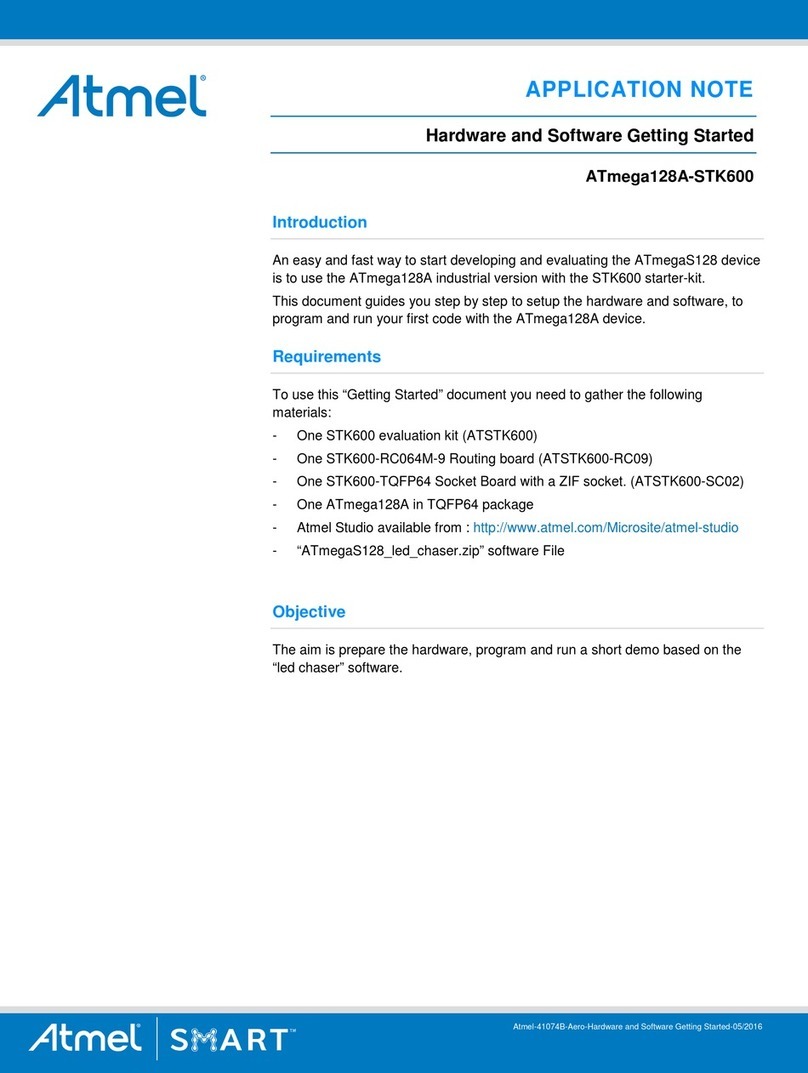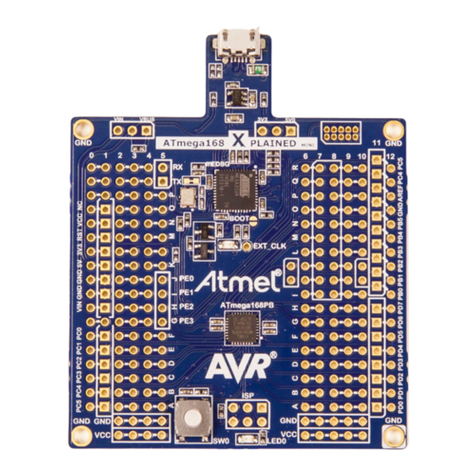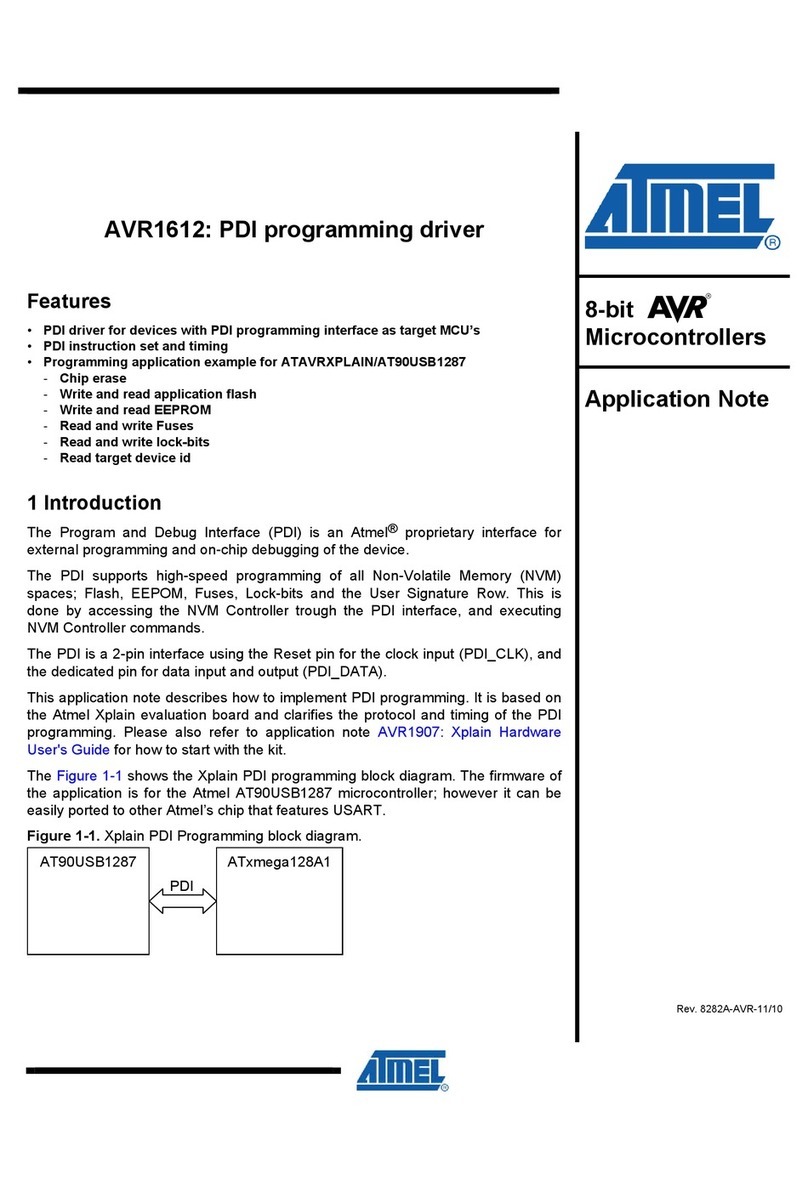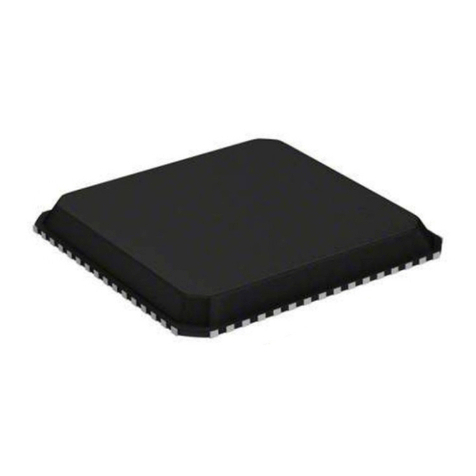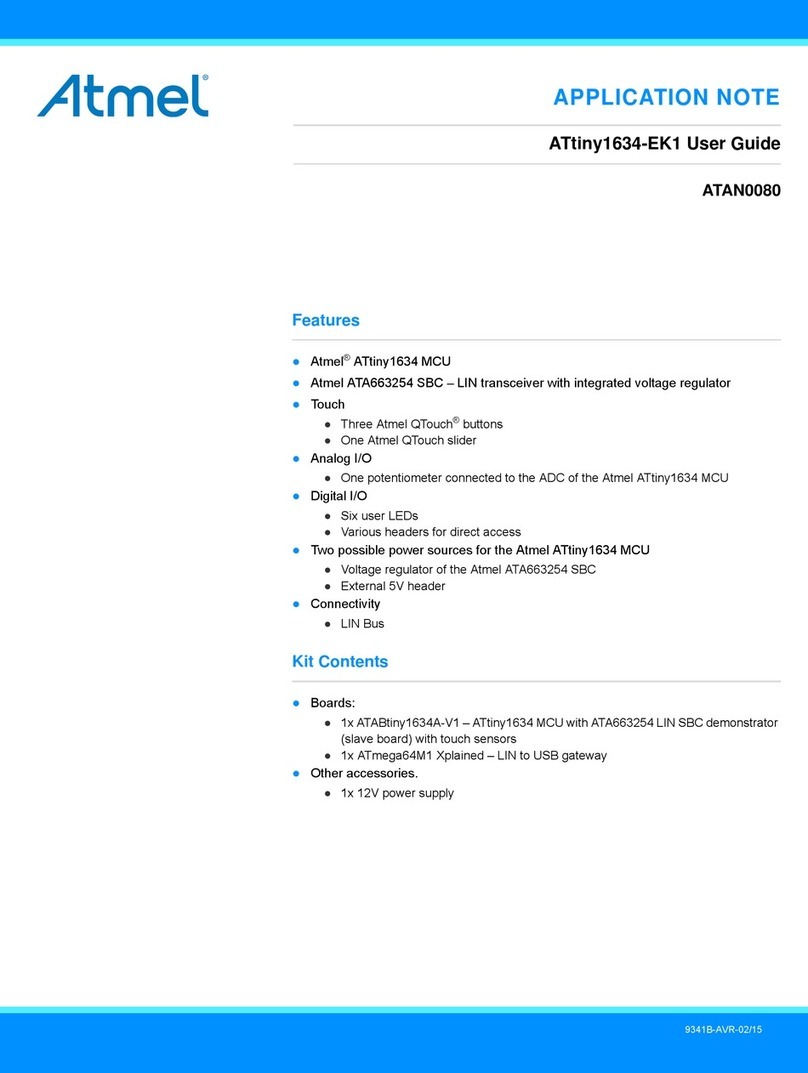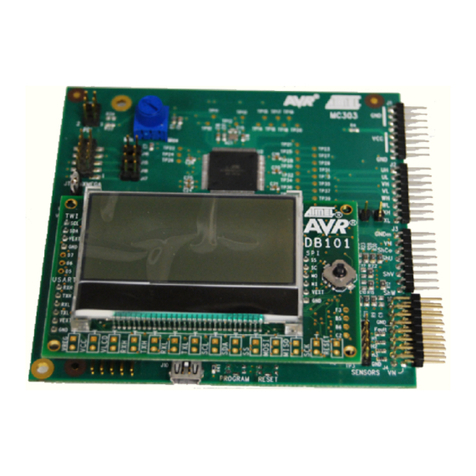
2C51 MCUs 4183A–80C51–11/02
RST Pin Description A high on the RST pin for several machine cycles while the oscillator is running, resets
the device. An internal resistor to VSS permits a power-on reset using only an external
capacitor to VCC. While this pin is forced high, the MCU Core is halted from executing
code, the peripherals are stopped and the I/Os are tri-stated.
The RST pin is an output when the Hardware Watchdog Timer times out and forces a
system reset. When Watchdog Timer overflows, it drives an output RST HIGH pulse at
the RST pin. When the watchdog is used, a resistor Rrst mounted in serial with the exter-
nal capacitor Crst or reset circuit is necessary to allow the Hardware Watchdog to drive
the RST pin.
Theory of Operation For the MCU to successfully decode and execute instructions, the supplied voltage must
always stay above the minimum voltage level specified by the product datasheet. When
supplied voltage drops below this level, the MCU might to execute some instructions
incorrectly. The result is unexpected activity on the internal data and control lines. This
activity may cause MCU Registers, I/O Registers and Data Memories to get corrupted.
To avoid unexpected activity, the MCU should be prevented from executing code during
periods of insufficient supply voltage. This is best ensured by using a Power Supply Low
Voltage Detector. Below a fixed threshold voltage VT, the detector circuit forces the RST
pin high (active). Forcing RST high immediately stops the MCU from executing code.
While the supplied voltage is below the required threshold voltage VT, the MCU is
halted, making sure the system stays in a known state. When the supplied voltage rises
above this predefined voltage, the RST pin is again released, and the MCU starts to
execute code beginning at the Reset Vector.
Preventing SFR
Corruption When the Detector keeps the MCU in Reset, all MCU activity is halted. When released
from Reset, all the Special Function Registers (SFRs) are in their default state.
Without a Detector, random MCU activity such as described before might cause the
Special Function Registers to get corrupted. See “Volatile Memory”below.
Preventing I/O Register
Corruption When using a Detector to keep the MCU in Reset, all I/O Registers are kept in their
default state for the duration of the reset. Consequently, all on-chip peripherals will stay
in their reset state.
Without a Detector, random MCU activity such as described before might write an
unknown value to any I/O Register. This may cause unexpected behavior of the on-chip
peripherals.
Preventing I/O Pin
Random Toggling A Detector will keep the MCU in Reset, and all I/O pins are kept in their default state for
the duration of the Reset.
Without a Detector, random MCU activity such as described before might write a ran-
dom value to the I/O Registers. This may cause random toggling of the I/O pins.
Preventing Volatile On-
chip Memory Corruption Using a Detector to keep the MCU in Reset, there will be no access to the volatile on-
chip memory. The memory will keep its present content for the duration of the Reset.
Without a Detector, random MCU activity such as described in the introduction may
write an unknown value to any volatile on-chip memory location.
